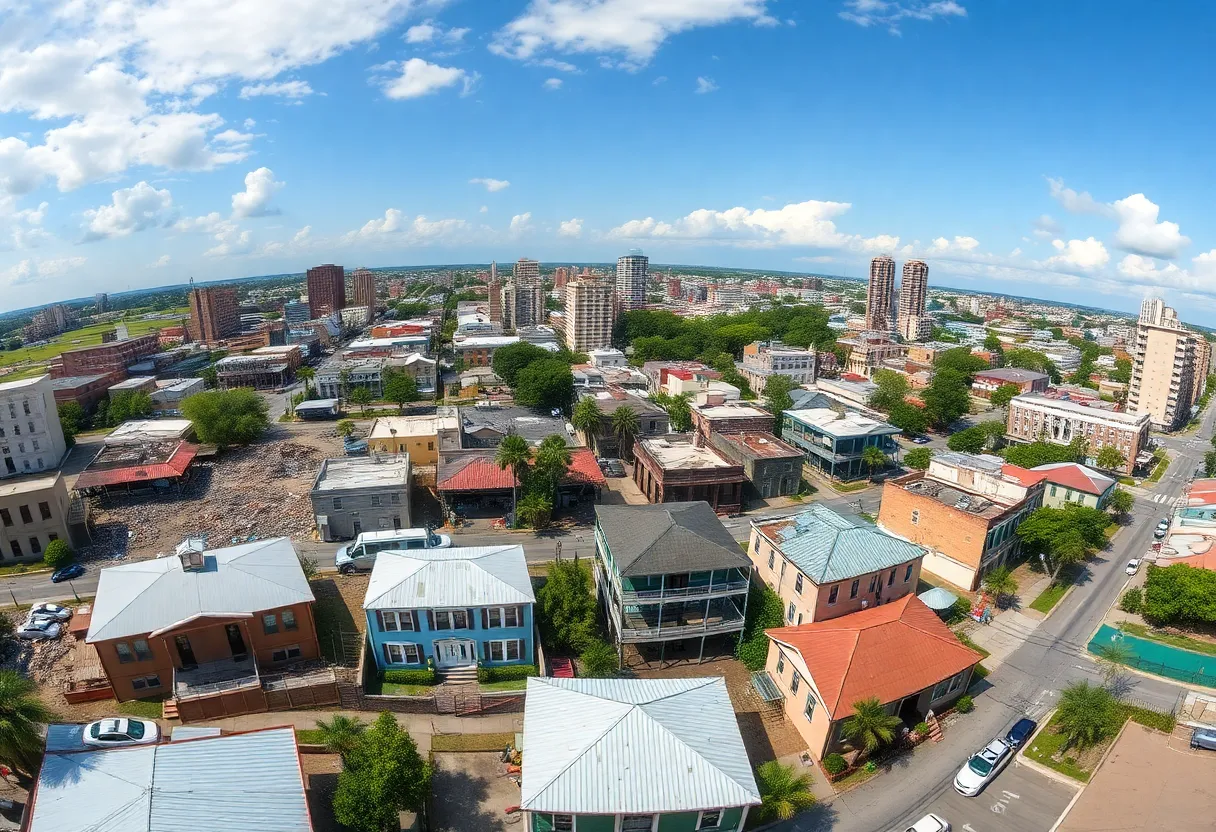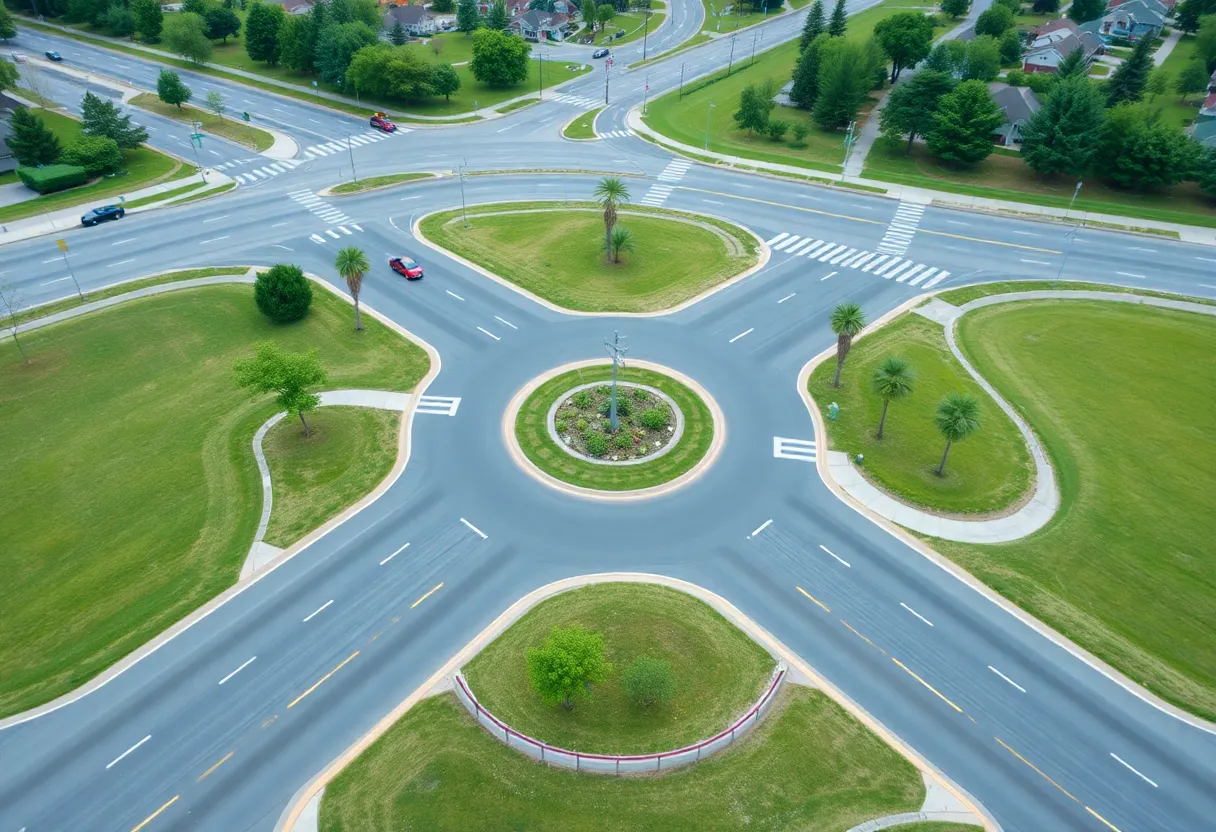News Summary
New Orleans continues to face challenges stemming from Hurricane Katrina, which struck in 2005. The storm displaced over half of the population, leading to a significant demographic shift and exposing social inequalities in recovery efforts. As the 20th anniversary approaches, discussions on disaster management, social justice, and community resilience are paramount.
New Orleans continues to grapple with the profound repercussions of Hurricane Katrina, which struck the region on August 29, 2005. The storm resulted in catastrophic flooding that caused over half of the city’s population to be displaced overnight. In the wake of the disaster, a mandatory evacuation was put into place, forcing thousands from their homes and scattering residents across various states.
Research shows that by 2006, one-third of the individuals who had lived in New Orleans prior to Katrina had not returned to the metropolitan area. Many residents fled to nearby cities like Baton Rouge and Lafayette, while others sought refuge in larger cities such as Houston and Atlanta. Among these displaced individuals, many found themselves referred to as “refugees,” highlighting the harsh reality of their displaced status within the country.
The impact on the city’s demographics has been profound. The 2000 census recorded a population of 484,674 inhabitants in New Orleans. After the hurricane, the population dramatically declined, and the recovery process further exposed existing social inequalities, particularly affecting marginalized communities. A review of the recovery process indicates that federal disaster programs, such as the Road Home, faced critiques for inequitable aid distribution, frequently favoring wealthier homeowners over low-income families. This distribution of recovery funds has led to long-lasting disparities in rebuilding efforts, significantly impacting socio-economic lines.
In the years following the hurricane, the disparities in recovery were starkly evident. By 2015, a survey revealed that while 70% of white residents felt the city had made significant progress in its recovery, only 44% of Black residents shared that sentiment. These statistics underline the racial divide present in the city’s recovery narrative.
Transportation poverty played a critical role during and after the hurricane, leaving many residents stranded and increasing the challenges faced during evacuation efforts. The events following the storm also raised serious ethical concerns, such as the incidents of police misconduct and the tragic outcomes observed at places like St. Rita’s Nursing Home and Memorial Medical Center. These incidents exposed significant flaws in the disaster management approach, calling for a reevaluation of disaster responses.
Despite the heavy toll taken by Hurricane Katrina, stories of resilience began to emerge from the rubble. Individuals like Lonnie Davis established the JazzArts organization, contributing to the revival of the local jazz scene while educating over 50,000 students. In a touching display of community spirit, Carol Allen organized a relief effort from France that managed to collect more than 550 boxes of supplies for evacuees, demonstrating a fundamental difference in disaster response approaches between the U.S. and France. While the U.S. response relied heavily on grassroots efforts, the French model was characterized by a more centralized governmental approach.
Furthermore, the challenges of displacement did not deter all residents. Diane Chaine returned to New Orleans in 2006 after initially moving back to Chicago. David Brown shifted his focus to creating a community choir in Columbus, integrating the arts into local schools and prisons. In an unexpected turn, David Faulk, who lost his home in St. Bernard Parish, was elected mayor of Prairie Grove, Arkansas, in 2023, highlighting how individuals can adapt and thrive despite the challenges they encounter.
As the 20-year anniversary of Hurricane Katrina approaches, discussions about social justice, disaster management policies, and community resilience strategies remain at the forefront of public discourse. The values and lessons learned continue to ripple effect through the fabric of New Orleans, serving as potent reminders of the need for holistic approaches to disaster recovery that address underlying social inequities.
In conclusion, the long-term effects of Hurricane Katrina still influence not only the demographic makeup of New Orleans but also the broader conversation about community resilience and equitable recovery practices, underscoring the need for continuous focus on social justice in disaster recovery efforts.
Deeper Dive: News & Info About This Topic
HERE Resources
New Orleans High School Ranked Most Outstanding in Louisiana
U.S. Army Corps Secures Funding for New Orleans Levee Inspections
Mardi Gras Service Returns to the Gulf Coast
20 Years After Hurricane Katrina: New Orleans’ Resilience
Amtrak’s Mardi Gras Train Service Returns to New Orleans
Marking Two Decades Since Hurricane Katrina
Greater New Orleans Companies Shine on Inc. 5000 List
New Orleans Commemorates 20 Years Since Hurricane Katrina
NOPD Officer Arrested on Prostitution Charges in Murder Probe
New Orleans Gears Up for Competitive Mayoral Election
Additional Resources
- Axios: New Data on New Orleans Displaced After Hurricane Katrina
- NOLA: The Story of Hurricane Katrina
- The Conversation: Lessons from Hurricane Katrina
- NOLA: Arts and Shows Reflecting on Katrina
- CNN: Hurricane Katrina Statistics
- Wikipedia: Hurricane Katrina
- Encyclopedia Britannica: Hurricane Katrina
- Google Search: Hurricane Katrina
- Google Scholar: Hurricane Katrina Displacement
- Google News: Hurricane Katrina

Author: STAFF HERE NEWORLEANS WRITER
The NEW ORLEANS STAFF WRITER represents the experienced team at HERENewOrleans.com, your go-to source for actionable local news and information in New Orleans, Orleans Parish, and beyond. Specializing in "news you can use," we cover essential topics like product reviews for personal and business needs, local business directories, politics, real estate trends, neighborhood insights, and state news affecting the area—with deep expertise drawn from years of dedicated reporting and strong community input, including local press releases and business updates. We deliver top reporting on high-value events such as French Quarter Festival, New Orleans Jazz & Heritage Festival, and Essence Music Festival. Our coverage extends to key organizations like the New Orleans Chamber of Commerce and Greater New Orleans, Inc., plus leading businesses in energy, healthcare, and education that power the local economy such as Entergy, Ochsner Health, and Tulane University. As part of the broader HERE network, including HEREShreveport.com, we provide comprehensive, credible insights into Louisiana's dynamic landscape.




